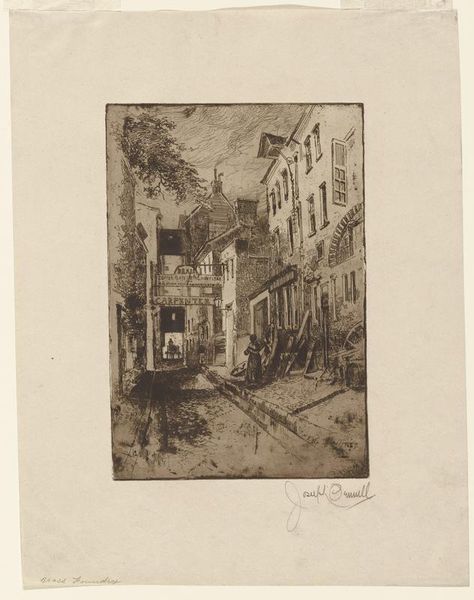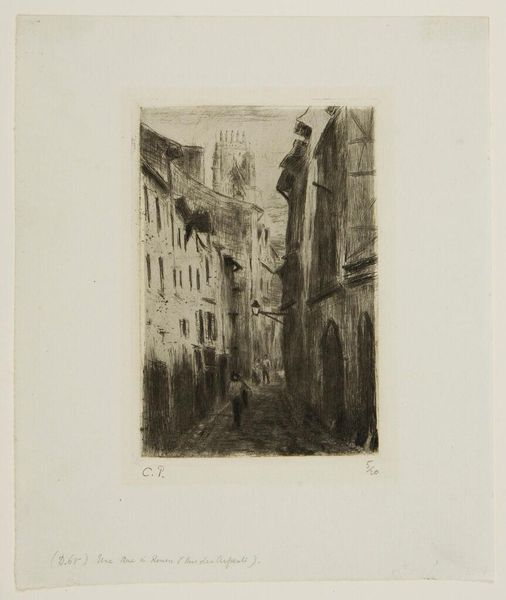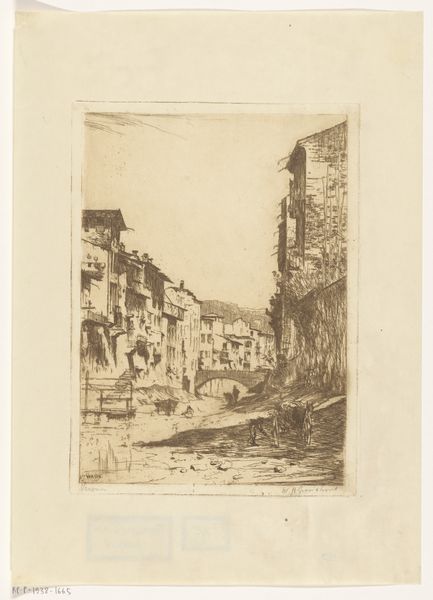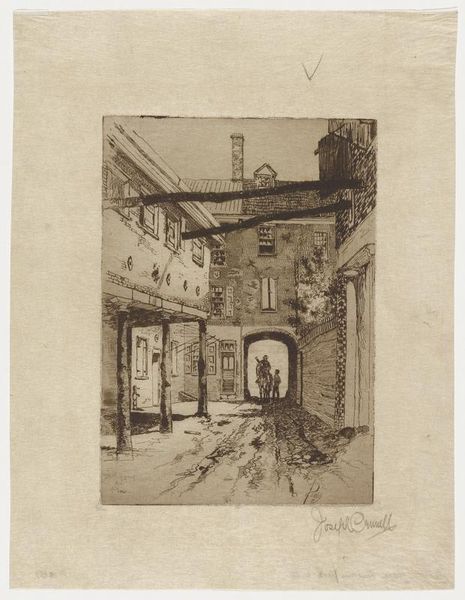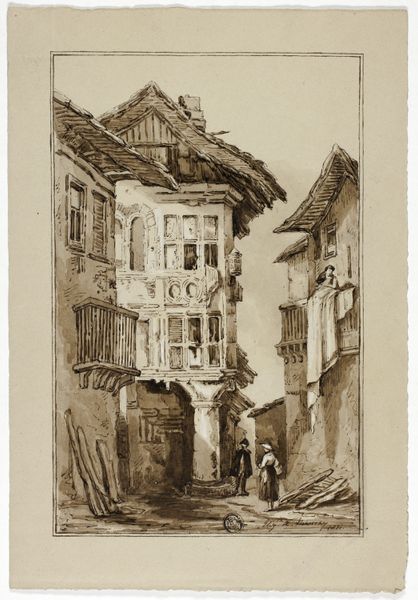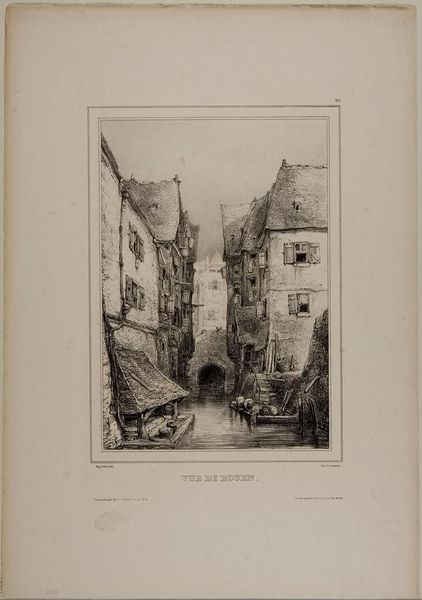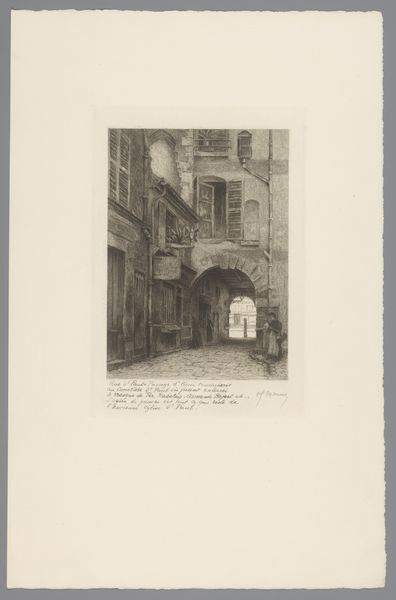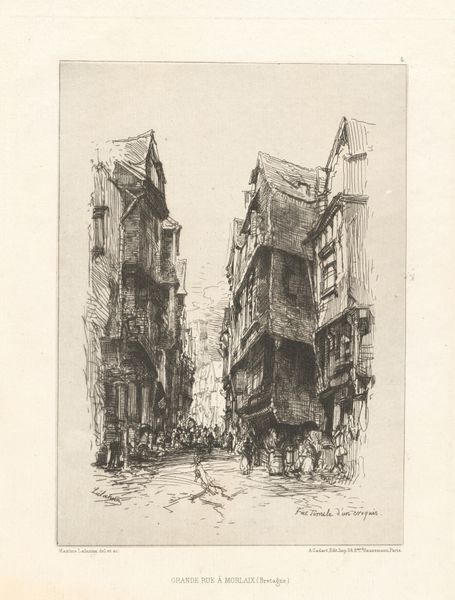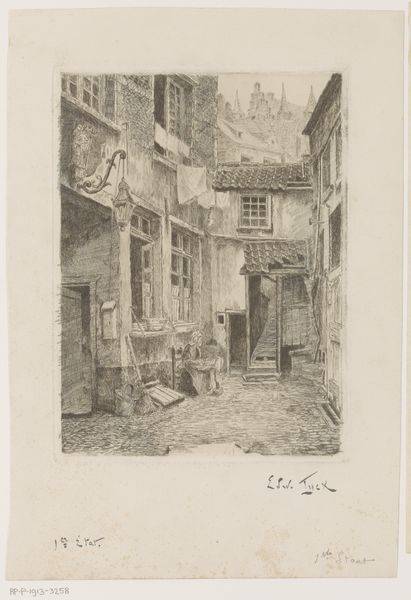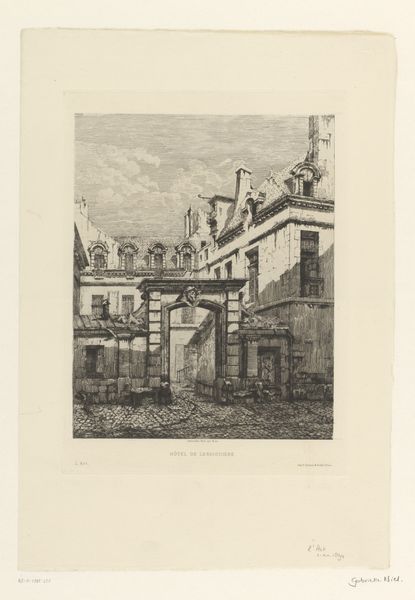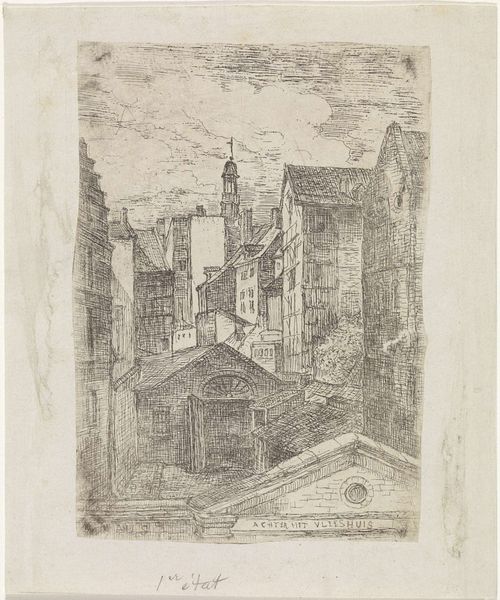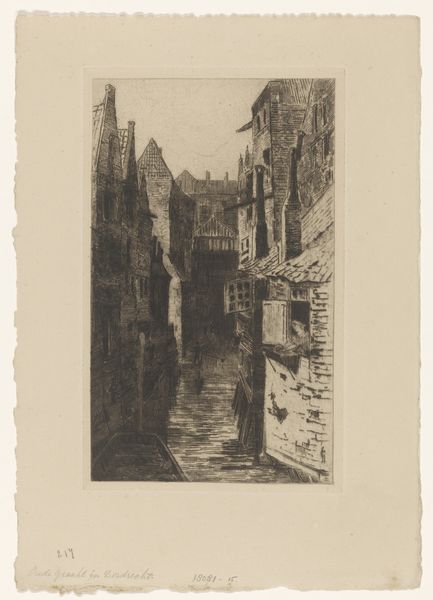
drawing, lithograph, print, paper
#
drawing
#
lithograph
# print
#
landscape
#
paper
#
romanticism
#
cityscape
Dimensions: 306 × 222 mm (image); 359 × 256 mm (primary support); 452 × 338 mm (secondary support)
Copyright: Public Domain
Curator: Eugène Isabey's "View of Rouen," created in 1832, offers us a glimpse into the architecture and atmosphere of this French city. Rendered as a lithograph, it masterfully uses the medium's tonal range. What's your initial take? Editor: The first impression is one of somber quaintness. The tightly packed buildings looming over the waterway seem almost oppressive, but there’s also an undeniable charm in the depiction of daily life along the canal. The details give off a sense of the past clinging to the present. Curator: Indeed. Consider Rouen's historical significance at the time – a city steeped in medieval history yet also experiencing the stirrings of industrial modernity. Isabey’s composition places the viewer directly within this nexus. The tight framing suggests a sort of social claustrophobia, perhaps a commentary on urban density and the disparities of burgeoning capitalism. Editor: The archway acting as a portal into a more distant, brighter space carries potent symbolism. The waterways reflect the architecture and suggest a fluidity between social classes even though the architectural composition seems confining, this could reveal cultural memory of fluidity and commerce along the river. Curator: I agree. It evokes not just physical space, but social mobility and the desire to escape confinement. What is suggested with that brighter archway is important as well in context. What the rising merchant class perhaps longed for but never had the space to truly realize. Editor: It seems Isabey is highlighting tensions between old and new, poverty and potential—emphasizing those psychological elements that can reveal identity. Even details such as those old wooden docks against stone foundations may underscore that constant push-pull between generations. Curator: Absolutely. It's a layered perspective into the Rouen's narrative during that period. Isabey isn’t just providing a landscape, he's prompting us to contemplate power structures in place. Editor: Examining Isabey’s work using this perspective unlocks some cultural layers. Thank you! Curator: The pleasure was all mine!
Comments
No comments
Be the first to comment and join the conversation on the ultimate creative platform.
